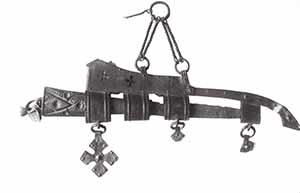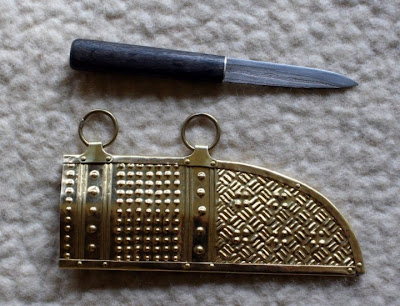Could you provide a description of the process used in Finland in preparing the materials, the size recommendations, and if available, the terms used to describe the different logs.
The fire is made of two large, dry pine logs (called
honka or
petäjä depending the dialect used). I'm here assuming that the fire is needed for two men. The diameter of the tree used for the fire depends the season; according to a manual printed in the 1930s, 23-25 centimeters or about 9-10 inches in diameter measured chest height from the ground is suitable for winter. The logs are cut about 1½ - 2 meters (5 - 6,5 feet) in length. The logs are carved flat from the other side and two slits called
tulkuskolo are made to the lower one on each end to allow the air to flow free between the logs. One then cuts smaller, three to four cm in diameter, pieces of green wood (
tulkkunen, pl. tulkkuset) which are put in right angle between the logs but over the slits. These are the birch wood blocks seen in the 1911 photograph.
Logs are piled on top of each other with
tulkkuset between. Wood shaves (
kiehinen, pl.
kiehiset) are then put between the logs and to the slits. These are shaved from pine roots or other place saturated with resin. The shaves are lit and after a while, if the logs have caught fire well, the
tulkkuset are removed and the fire continues on for some 10 to 12 hours.
Is there a rough translation of rakovalkea?
As
puukko is puukko and
sauna is sauna, rakovalkea can be really understood only with knowledge of Finnish. However one can split the compound into two seperate words that have their own meanings,
rako and
valkea. Rako ("slit"/"slot") is the easier one to understand as it refer to the opening between the logs. Independently
valkea usually is used to mean white but in this context it means fire, i.e. the hottest fire possible is white. Roughly translated
rakovalkea is thus "slit fire".
Interesting enough there is a single word for camp fire in Finnish language,
nuotio, while there is non in the English language. Finnish language is very rich also in almost all aspects of bushcrafting as proved above.









